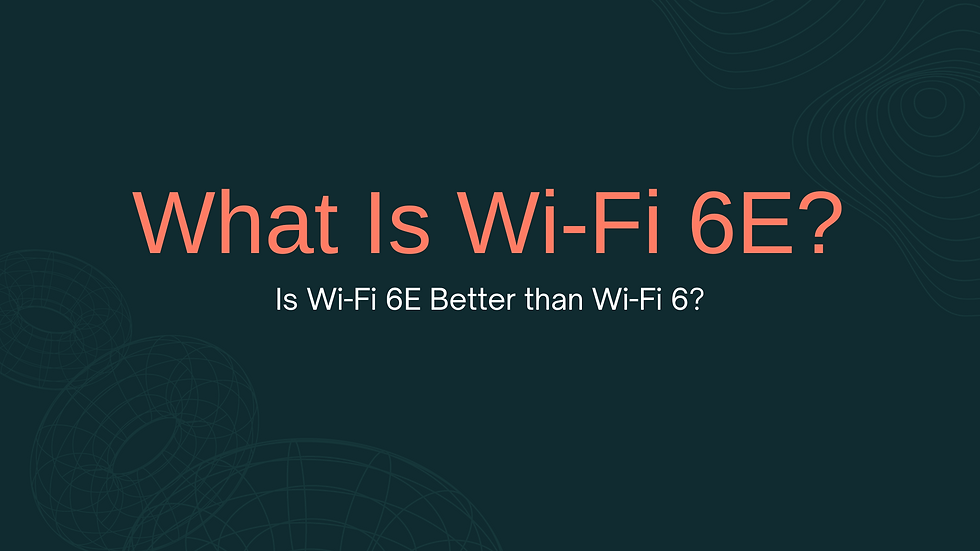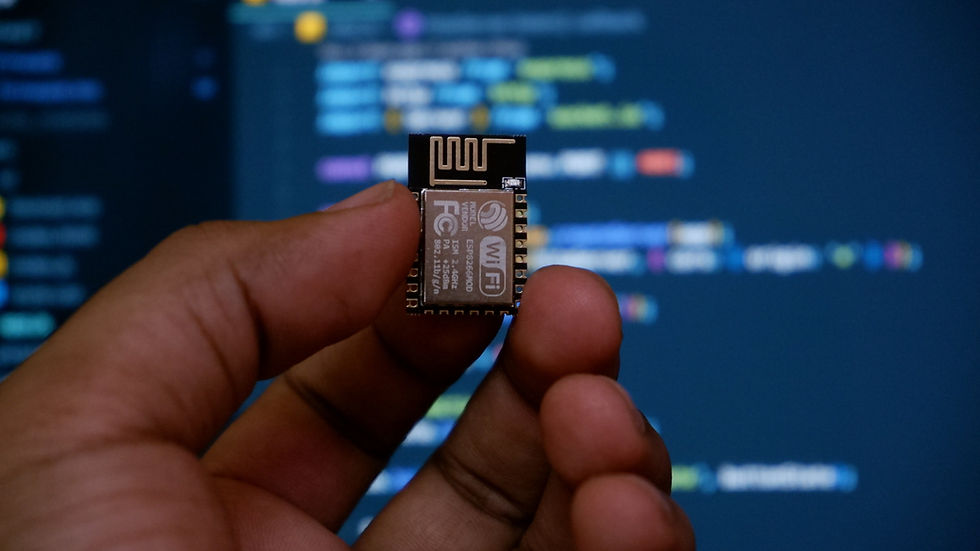What Is Wi-Fi 6E? Is Wi-Fi 6E Better than Wi-Fi 6?
- Nitiz Sharma
- Dec 16, 2023
- 3 min read

Wi-Fi 6E marks a significant milestone in this continuous evolution, bringing unprecedented advancements to wireless networking.
Understanding Wi-Fi 6E's role in the evolution of wireless networks is crucial, especially for professionals aiming to excel in this field.
The CCIE Wireless certification course provides an in-depth understanding of these advancements, equipping network specialists with the expertise needed to design, implement, and manage cutting-edge Wi-Fi solutions.
What Is Wi-Fi 6E?
Wi-Fi 6E extends the capabilities of Wi-Fi 6 by utilizing the newly opened 6 GHz frequency band. This expansion provides more bandwidth, higher data rates, and less interference.
Wi-Fi 6E offers all the benefits of Wi-Fi 6, including improved efficiency and support for more devices, but with the added advantage of a wider spectrum that significantly enhances network performance, particularly in crowded areas.
Wi-Fi 6 vs. Wi-Fi 6E:
Wi-Fi 6E, an extension of Wi-Fi 6 that retains all the technological advancements of Wi-Fi 6 but with a significant addition: the 6 GHz frequency band. This new band is the cornerstone of Wi-Fi 6E’s enhanced capabilities. Here's how Wi-Fi 6E stands out in comparison to Wi-Fi 6:
Expanded Spectrum: The inclusion of the 6 GHz band in Wi-Fi 6E offers an additional 1200 MHz of spectrum. This vast expansion means more available channels, which translates to less overlap and interference from neighboring networks.
Increased Bandwidth and Speed: Wi-Fi 6E can deliver higher peak data rates. The additional bandwidth in the 6 GHz spectrum allows for broader channels (up to 160 MHz), which are essential for high-bandwidth applications like VR and ultra-HD video streaming.
Reduced Congestion: The 6 GHz band is less congested than the 2.4 GHz and 5 GHz bands. This is particularly beneficial in dense urban areas where networks often compete for the same frequency space, leading to network interference and slower speeds.
Improved Connection Quality: Wi-Fi 6E's ability to operate in a cleaner spectrum means that devices can maintain higher-quality connections with less interference. This is crucial for applications that demand consistent and reliable connectivity, such as telemedicine and remote work.
How Does Wi-Fi 6E Work?
Wi-Fi 6E works by leveraging the newly available 6 GHz spectrum, along with technologies like OFDMA (Orthogonal Frequency Division Multiple Access) and MU-MIMO (Multi-User, Multiple Input, Multiple Output).
These technologies enable more efficient data encoding, increased throughput, and simultaneous data transmission to multiple devices, significantly improving network performance and reducing latency.
Benefits of Wi-Fi 6E
Higher Data Rates: Wi-Fi 6E offers faster data transfer speeds, ideal for high-bandwidth activities like streaming 4K/8K video, gaming, and video conferencing.
Increased Bandwidth: The addition of the 6 GHz band provides more spectrum, reducing congestion and improving performance, especially in crowded areas.
Lower Latency: Wi-Fi 6E significantly reduces latency, enhancing experiences in online gaming, virtual reality, and other real-time applications.
Greater Capacity: Supports a larger number of devices simultaneously with minimal impact on speed and reliability, perfect for smart homes and IoT environments.
Improved Efficiency: Utilizes technologies like OFDMA and MU-MIMO for more efficient data transmission, leading to improved network performance.

Requirements for Wi-Fi 6E:
Wi-Fi 6E Compatible Router: Requires a router that supports the 6 GHz band to create a Wi-Fi 6E network.
Wi-Fi 6E Enabled Devices: For full benefits, devices like smartphones, laptops, and tablets need to support Wi-Fi 6E.
Upgraded Infrastructure: Existing networks may need hardware upgrades to support the 6 GHz band fully.
Consideration of Range: The 6 GHz band may have a slightly shorter range than 2.4 GHz and 5 GHz bands, potentially requiring more strategic placement of routers or additional access points.
Software Compatibility: Ensuring device drivers and network management software are updated to support Wi-Fi 6E features.
Is Wi-Fi 6E Better than Wi-Fi 6?
Wi-Fi 6E is not just an incremental update but a significant leap forward. It builds upon the strengths of Wi-Fi 6 by offering all its benefits — increased speed, efficiency, and capacity — while also adding access to the 6 GHz band.
This makes Wi-Fi 6E better suited for environments with many devices and high data demands, providing a more robust and less congested wireless networking experience.
Do You Need Wi-Fi 6E?
Whether to upgrade to Wi-Fi 6E depends on individual needs. For users with high bandwidth demands or those in crowded environments, Wi-Fi 6E offers noticeable improvements.
However, for average home users with modest internet needs, the current Wi-Fi 6 or earlier may suffice. This section will help readers assess their specific situations to make an informed decision.
Conclusion:
Wi-Fi 6E brings wireless networking, emphasizing its suitability for future technological demands. It will also touch upon the ongoing evolution of Wi-Fi technology and what users can anticipate in terms of connectivity and digital interaction in the coming years.







Comments